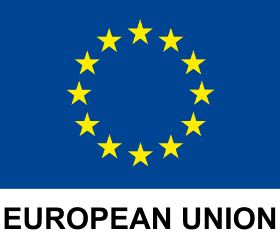Index
Get the latest news right in your inbox
The digital transformation in the legal and commercial environment has boosted the use of document authentication and validation technologies. In this context, the electronic signature has established itself as the digital equivalent of the handwritten signature, providing security, agility and cost reduction. However, there are different types of electronic signatures - from simple to advanced and qualified - which vary in their technical requirements, security level and applications.
In this article we analyze in depth the differences between advanced electronic signatures and qualified electronic signatures, exploring their advantages, legal validity, regulatory differences and use cases by sector, so that companies and public administrations can choose the most appropriate solution for their needs.
Difference between an advanced electronic signature and a qualified electronic signature
Although both advanced electronic signature and qualified electronic signature are types of electronic signatures recognized and regulated by Regulation (EU) No. 910/2014 (eIDAS), they have substantial differences in terms of their technical requirements and creation process.
Qualified electronic signature requires the use of a qualified signature creation device (QSCD), either in physical form, such as SmartCard or USB token, or through cloud solutions using hardware security modules (HSM).
In contrast, advanced electronic signatures can be implemented using software based on public key infrastructure without requiring a specifically qualified device. This technological difference translates into a higher level of security for the qualified electronic signature.
In addition, the digital certificate used in a qualified signature must be issued by a Qualified Trust Service Provider (QTSP), which implies stricter control and supervision. On the other hand, advanced electronic signatures can use secure digital certificates, but they do not have the same formal qualification, which directly affects the level of legal assurance. Indeed, qualified electronic signatures are legally equated to handwritten signatures in all EU Member States, giving them an automatic presumption of legal validity in the event of litigation, while advanced electronic signatures, despite meeting high security standards, may require the submission of additional evidence to demonstrate compliance with all their requirements.
Another important difference lies in the complexity and costs of implementation. The additional requirements for qualified electronic signatures, both in terms of devices and certification, usually involve more complex processes and higher operational costs. In contrast, advanced e-signatures are a more agile and economically viable solution for most business transactions.
In addition, the option of combining biometric advanced electronic signature and KYC processes is particularly attractive for environments where high security is required without resorting to the complexity of a qualified signature, which is mostly used in transactions with public administrations.

Legal validity of qualified electronic signatures and advanced electronic signatures
The eIDAS regulations establish that, in legal terms, no electronic signature should be denied legal effect because it is not qualified. However, in practice, there are important nuances:
- Advanced electronic signature
Although it complies with the requirements of article 26 of the eIDAS regulation, its evidentiary effectiveness may be affected in situations of dispute, since the burden of proof regarding compliance with its requirements falls on the signatory. In many cases, it is sufficient for commercial transactions and internal agreements, where the risk is moderate. - Qualified electronic signature
It is legally equivalent to the handwritten signature according to article 25.2 of eIDAS. Thanks to the mandatory use of a qualified device and certificates issued by a QTSP (Qualified Trust Service Provider), it offers maximum legal certainty. In litigation, the presumption of integrity and authenticity rests heavily on the qualified signature, facilitating dispute resolution and reducing the burden of proof for the company.
That is why, although both signatures generate legal effects, it is important to know which type of electronic signature best suits your company's needs. The qualified electronic signature is recommended for documents or transactions of high legal value, while the advanced electronic signature is sufficient for most commercial processes.


Differences between the different types of electronic signatures: simple, advanced and qualified according to eIDAS.
The eIDAS regulation establishes a unified legal framework in the European Union for the use of electronic signatures, clearly differentiating three levels of legal guarantee. Although all electronic signatures have legal effects and are admissible as evidence in legal proceedings, the regulation distinguishes that the simple electronic signature, although valid, does not confer the same presumption of integrity and authenticity as the advanced electronic signature.
In the case of the latter, although it is recognized as having a higher evidentiary value compared to the simple electronic signature (SES), the burden of proof falls on the signatory to demonstrate that all the requirements established by law have been met.
For its part, the qualified electronic signature is the only signature that, according to the eIDAS framework, is automatically equated with the handwritten signature. This means that, in any litigation, the presumption of validity rests on the signature itself, resulting in mutual legal recognition in all EU member states without the need to additionally prove its integrity or the identity of the signatory.
In essence, while simple and advanced electronic signatures offer legal validity, only qualified signatures provide a full regulatory guarantee that minimizes the burden of proof and ensures legal interoperability throughout the Community.
Characteristics of the Advanced Electronic Signature (AES)
The Advanced Electronic Signature is based on a regulatory framework that guarantees a high level of security without reaching the strictest requirements of the qualified signature. Its main characteristics are:
- It is exclusively linked to the signatory.
- Allows the signer to be clearly identified.
- It is created using data controlled only by the signatory.
- Ensures that any modifications to the document are detected.
Qualified Electronic Signature (QES) features
The Qualified Electronic Signature incorporates all the guarantees of the advanced electronic signature, but adds additional measures that place it at the highest level of legal trust.
- It includes all the guarantees of the advanced signature.
- Requires the use of a qualified signature creation device (QSCD).
- It is based on qualified digital certificates issued by a QTSP.
- It is legally equivalent to a handwritten signature in all EU member states.
What types of documents require a qualified signature instead of an advanced signature?
Although qualified electronic signatures offer the highest level of security, in practice they are not necessary for the vast majority of commercial transactions. The complexity and cost associated with its implementation make it less practical for everyday use.
For most B2B and B2C transactions, it is preferable to opt for an advanced electronic signature or even an advanced biometric electronic signature combined with KYC processes. These options provide robust security and ensure document integrity without incurring the complexity of a qualified signature.
Qualified electronic signature is mainly recommended for:
- Procedures with Public Administrations: Official documents, bids, high-value contracts that require strict validation.
- High-risk B2B financial transactions: Large banking transactions or financial contracts where maximum collateral is essential.
Advanced biometric electronic signatures in conjunction with KYC processes are the secure choice for environments that require the highest security, while advanced electronic signatures are ideal for most business needs with your customers. Both options enable integration with digital systems, reduce costs and time, and streamline management.

What should a good e-signature platform look like?
An electronic signature platform must meet several essential elements to ensure security, ease of use and regulatory compliance:
- Regulatory compliance: The solution must be certified and comply with the eIDAS regulation, ensuring that the appropriate standards (XAdES, PAdES, CAdES or ASiC) are used to guarantee the legal validity of the signatures.
- Integration of advanced authentication: The incorporation of multi-factor authentication methods (e.g., sending OTP codes or biometric verification) and KYC processes is key to ensuring the signer's identity, especially in biometric advanced electronic signatures.
- Ease of use and intuitive interface: The user experience should be seamless, allowing the signing process to be completed in seconds without requiring advanced technical knowledge.
- High availability and scalability: The platform must be able to handle high volumes of documents and signatures without affecting the speed of the service.
- Data security: Implementation of strong encryption, secure storage of certificates and signatures, and compliance with data protection regulations such as the GDPR.
- Technical support and continuous updating: Efficient customer service and periodic updates to ensure compliance with new standards and regulations.
- Customized signature options: The possibility of choosing between advanced or qualified electronic signature, depending on the nature of the document, is essential to adapt to different use cases.
By opting for a platform such as Tecalis Sign, you ensure that both the signature process and the validation and storage of documents are carried out efficiently and securely.
Cases of use of electronic signatures by sector
The adoption of electronic signatures has enabled companies in various sectors to digitally transform their processes. Here are some practical examples:
Banking and Financial Sector
- Contracting and account opening: Banks can streamline account opening and contract signing through advanced electronic signatures. For high-risk transactions or signing complex legal documents, the biometric option combined with KYC is recommended.
- Credit and financing processes: Digital validation of documents allows for reduced approval times and improved traceability of financial transactions.
Insurance Sector
- Policy contracts and claims: Advanced electronic signatures allow both clients and agents to sign documents remotely, ensuring policy integrity and expediting the claims process.
- Customer onboarding: The integration of KYC processes with biometric signature facilitates customer onboarding and reduces the risk of fraud.
Real Estate Sector
- Signing of leasing and purchase and sale contracts: Advanced electronic signature is sufficient for most of these contracts, while for higher value transactions or with public entities, qualified signature can be used.
- Booking agreements and agency contracts: These documents can be managed digitally, reducing the need for physical presence and speeding up the closing of agreements.
Human Resources and Internal Administration
- Employment contracts and internal agreements: Advanced electronic signatures enable companies to manage hiring and other internal documents quickly and securely.
- Payroll and authorization management: The use of digital signatures reduces bureaucracy and enables secure and accessible digital archiving.
Public Sector
- Administrative procedures and tenders: In these cases, qualified electronic signature is the preferred option, since the highest level of legal guarantee is required to interact with administrations and comply with strict regulations.
- e-Government Services: The integration of platforms such as AutoFirma in the Spanish Government demonstrates how the identity and integrity of documents can be guaranteed in the public sector.
Other sectors (Education, Retail, Health)
- Education: Universities and training centers can use electronic signatures for the validation of certificates, issuance of diplomas and collaboration contracts.
- Retail and e-commerce: The advanced electronic signature streamlines the acceptance of terms and conditions and the formalization of agreements with suppliers.
- Healthcare: Informed consent processes and medical records management benefit from the security and traceability offered by digital signatures.
























